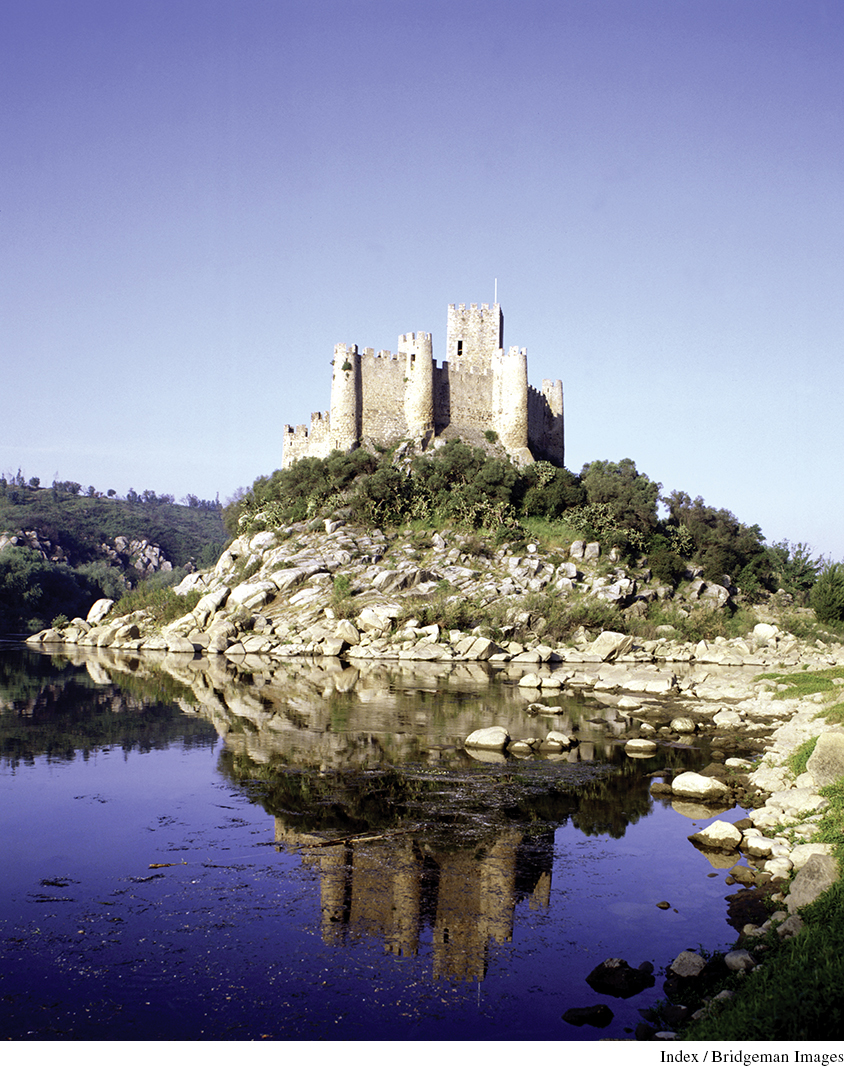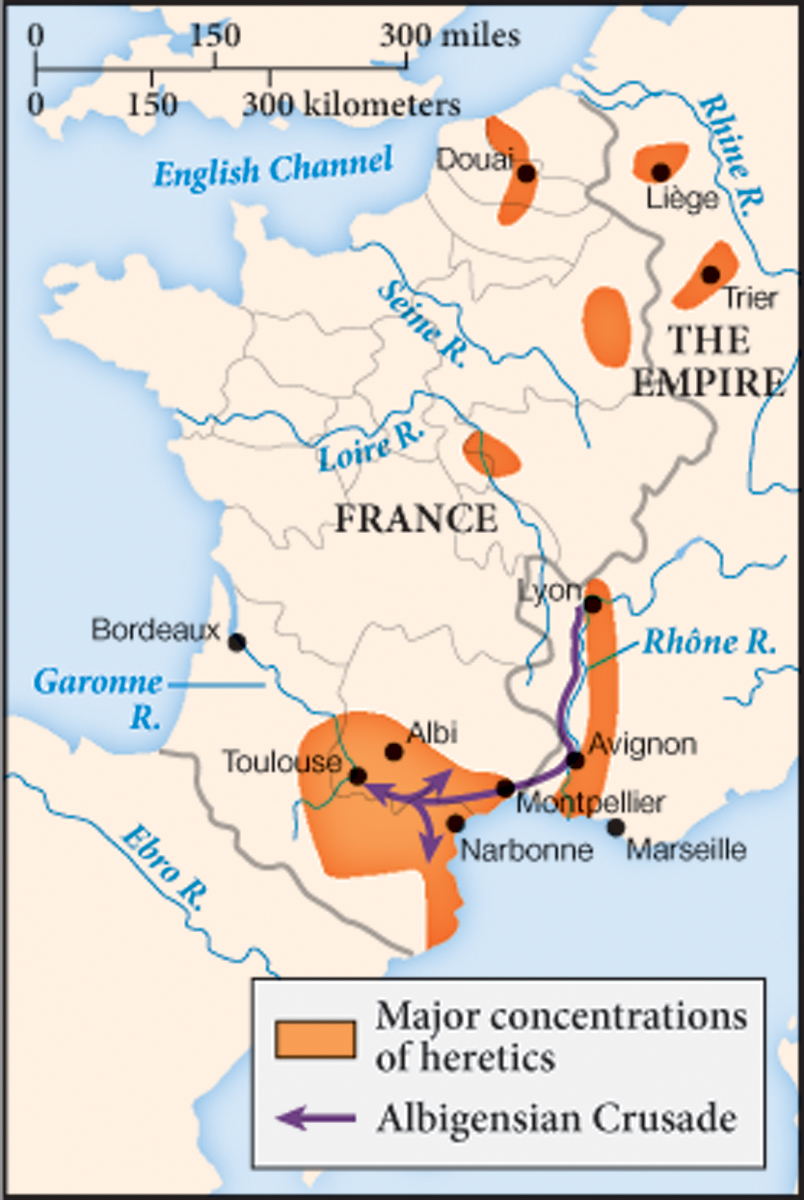Victorious Crusades in Europe and on Its Frontiers
Victorious Crusades in Europe and on Its Frontiers
Armed expeditions against those perceived as infidels were launched not only to the Holy Land but also much nearer to home. In Spain, the reconquista continued with increasing success and virulence in the second half of the twelfth century. Christian Spain took on the political configuration that would last for centuries: Aragon in the east, Castile in the middle, and Portugal in the west. The leaders of these polities competed for territory and power, but above all they sought an advantage against the Muslims to the south (Map 11.3).

Piecemeal conquests—followed by the granting of law codes to regulate relations among new Christian settlers as well as the Muslims, Mozarabs (Christians who had lived under the Muslims), and Jews who remained—gradually brought more territory under northern control. In 1212, a crusading army of Spaniards led by the kings of Aragon and Castile defeated the Muslims decisively at the battle of Las Navas de Tolosa. “On their side 100,000 armed men or more fell in the battle,” the king of Castile wrote afterward, “but . . . incredible though it may be, unless it be a miracle, hardly 25 or 30 Christians of our whole army fell. O what happiness! O what thanksgiving!” The decisive turning point in the reconquista had been reached, though all of Spain came under Christian control only in 1492.

Christians flexed their military muscle along Europe’s northern frontiers as well (see Map 11.2). Already during the Second Crusade a number of campaigns had been launched against the people on the Baltic coast. Those campaigns were the beginnings of the Northern Crusades, which continued intermittently until the early fifteenth century. The first phase was led by the king of Denmark and the Saxon duke Henry the Lion. Their initial attacks on the Slavs were uncoordinated, but in the 1160s and 1170s, the two leaders worked together to bring much of the region west of the Oder River under their control. They took some land outright; even more frequently, they turned Slavic princes into their vassals. Meanwhile, the Cistercians arrived even before the first phase of fighting had ended, building monasteries to the very banks of the Oder River. Soon German traders, craftspeople, and colonists poured in, populating new towns and cities along the Baltic coast and dominating the shipping that had once been controlled by non-Christians. The leaders of the crusades gave these townsmen some political independence but demanded a large share of the cities’ wealth in return.
Slavic peasants suffered from the conquerors’ fire and pillage, but the Slavic ruling classes ultimately benefited from the Northern Crusades. Once converted to Christianity, they found it advantageous for both their eternal salvation and their worldly profit to join new crusades to areas still farther east.

Although less well known than the crusades to the Holy Land, the Northern Crusades had far more lasting effects: they settled the Baltic region with German-speaking lords and peasants and forged a permanent relationship between northeastern Europe and its neighbors to the south and west. With the Baltic dotted with churches and monasteries and its peoples dipped into baptismal waters, the region gradually adopted the institutions of western medieval society—cities, guilds, universities, castles, and manors. Only the Lithuanians managed to resist western conquest, settlement, and conversion.
Crusades were also launched within Europe itself. The first of these attacked the Cathars in southern France. To be sure, the papacy initially tried conversion, and the Dominican Order had its start as preachers to the heretics. Its founder, St. Dominic (1170–1221), and his followers rejected material riches and went about on foot, preaching and begging and trying to bring the Cathars back into the church. Resembling the Franciscans both organizationally and spiritually, the Dominicans, too, were called friars. But their missions did not have much success, and in 1208 the pope called upon northern princes to take up the sword, invade Languedoc, wrest the land from the heretics, and populate it with orthodox Christians.
REVIEW QUESTION How did the idea of crusade change from the time of the original expedition to the Holy Land?
The Albigensian Crusade (1209–1229) for the first time offered warriors fighting an enemy within Christian Europe all the spiritual and temporal benefits of a crusade to the Holy Land. Like all other crusades, the Albigensian Crusade had political as well as religious dimensions. It pitted southern French princes, who often had heretical sympathies, against northern leaders eager to demonstrate their piety and win new possessions. After sixteen years of warfare, the Capetian kings of France took over leadership of the crusade. By 1229, all resistance was broken, and Languedoc was brought under the French crown.